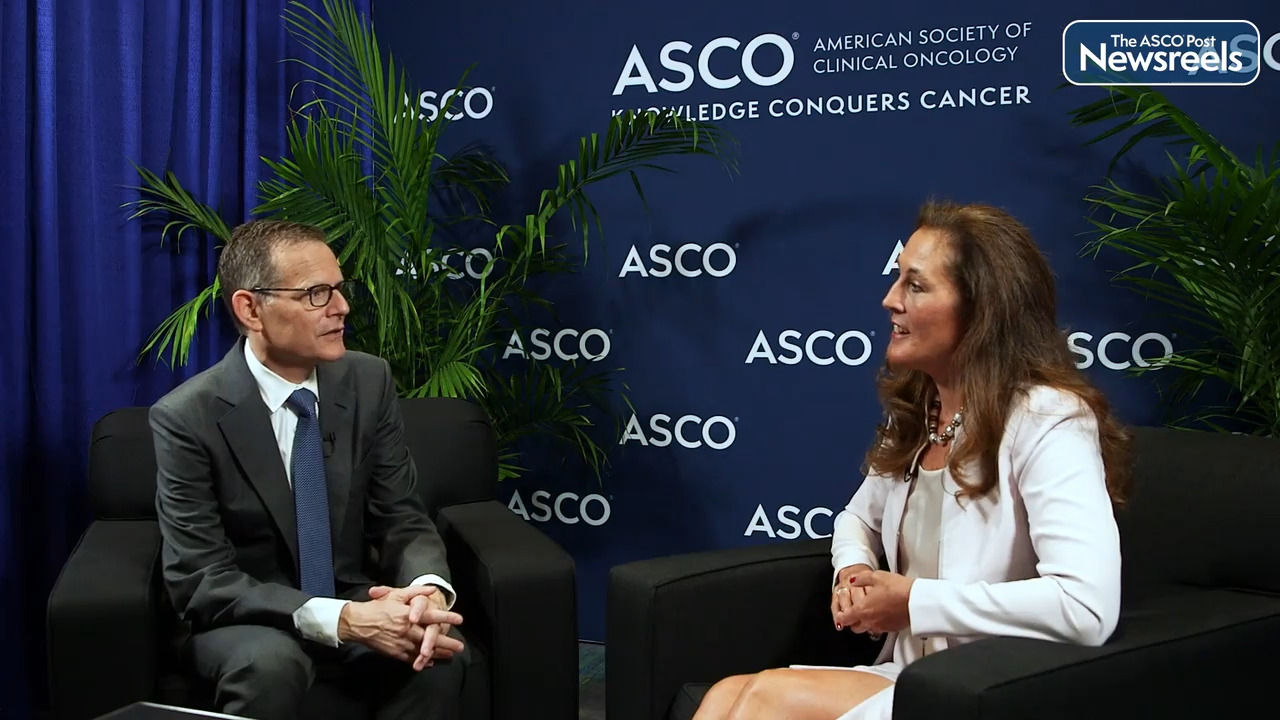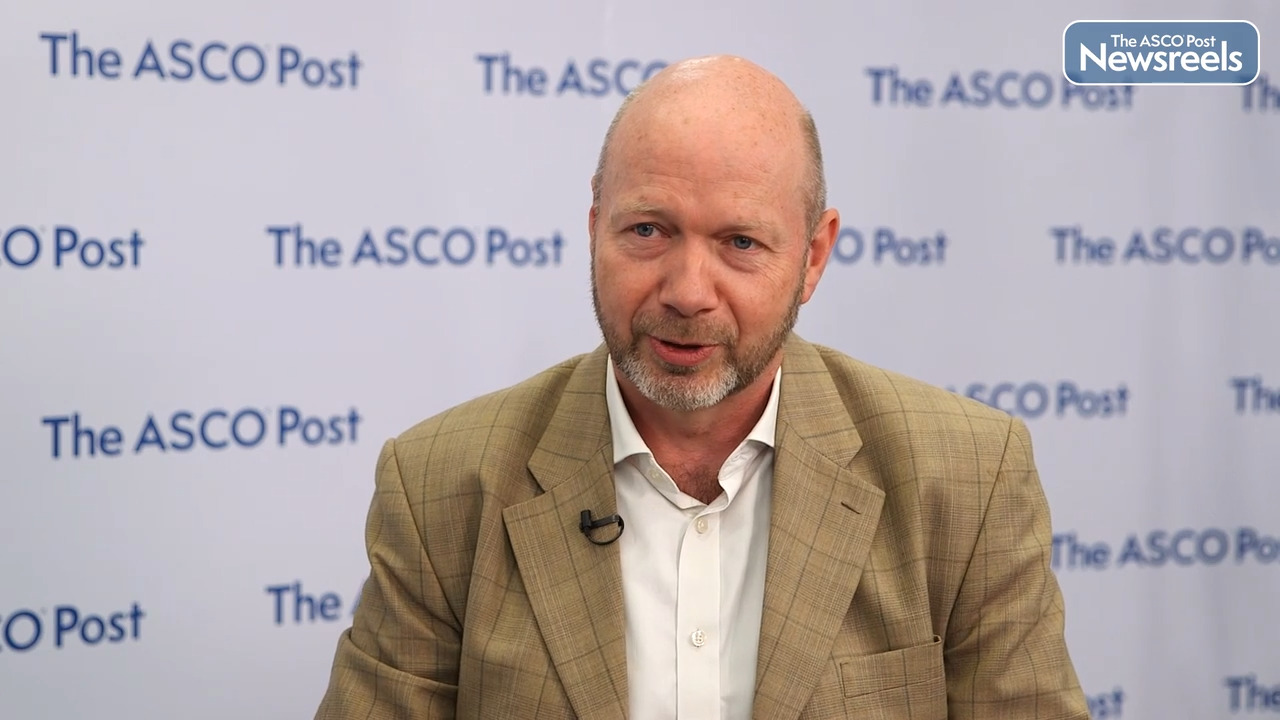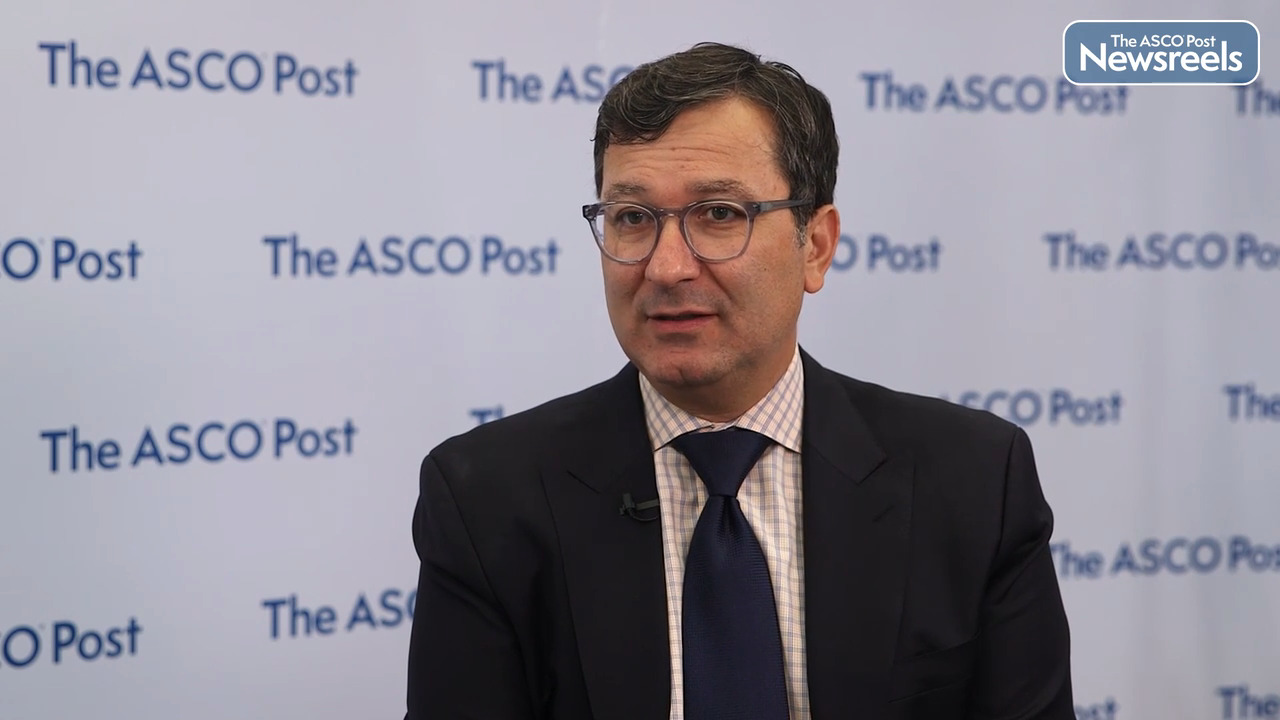Sue S. Yom, MD, PhD, on Oropharyngeal Cancer and the Feasibility of a Cell-Free DNA Plasma Assay
2022 ASCO Annual Meeting
Sue S. Yom, MD, PhD, of the University of California, San Francisco, discusses a translational analysis from the NRG-HN002 study. This phase II trial established the feasibility of the tumor tissue–modified viral (TTMV) human papillomavirus DNA assay in clinical trial specimens. The goal is to use such an assay to measure tumor volume, levels of TTMV over the course of treatment, and the association of TTMV to treatment outcomes (Abstract 6006).
Transcript
Disclaimer: This video transcript has not been proofread or edited and may contain errors.
At this meeting, we were pleased to present a translational analysis from NRG Oncology. NRG Oncology is a cooperative group that ran a study called NRG-HN002. This was a study looking for a de-intensification arm for HPV positive oropharyngeal cancer patients to take forward into a phase three setting in HN002. We had two arms on the study, which were a chemo radiation arm to 60 gray with weekly cisplatin, as well as an IMRT alone arm that's delivered over five weeks. This translational study was a study of blood specimens that were taking at three pre-specified endpoints. Baseline prior to treatment, after two weeks of radiation therapy or chemo radiation delivery, and then at two to four weeks after the end of the treatment and the participation rates were actually quite good, even though it was a separate substudy. We had about 50% participation over the course of the study, maybe weighing to about 40% by the end of the study. But half of patients donated specimens and we were able to find a few things with three different hypotheses. First of all, at the pre-treatment baseline, we found that there was a weak to moderate correlation of the detection level of the HPV-DNA fragments, which our tumor tissue modified. A little bit more specific than regular cell-free DNA. We were able to find a weak to moderate correlation with the overall gross tumor burden. We also found that 10% of patients were undetectable at baseline for a variety of potential reasons, which were continued to explore, could be mismatch with true HPV mismatched to P16, could be characteristics of the samples which were collected in a national study, could be characteristics of the infection, whether integrated or not. We'll continue to investigate that. For the intro treatment sample at two weeks, after two weeks of treatment, we did find a variation in changes over the course of the study in patients. There was some heterogeneity in the pattern of DNA response, which was interesting to see, although the vast majority of patients ended up at undetectability by the completion of treatment at the post-treatment final time point, but it was interesting to see that variation and also to see that it wasn't necessarily true of all patients that they had continuous decreases in the fragments per ml. Although if you looked at the median level overall, the trend was downward throughout the course of treatment. And then at the post-treatment time point, what we found was that essentially there seemed to be an association that was statistically significant with PFS events, and that is pretty notable because the patients on this study generally did pretty well. And we had a relatively small number of PFS events, but they were associated with continued detectability by the end of treatment. I think what's important about this study on an operational and sort of national scale is that this was done in a large scale national study within the cooperative group setting. And so it really shows the feasibility of being able to conduct meaningful translational research within that setting. And also it gives us a pathway forward. We have been able to confirm with this study that the level of tumor tissue modified HPV-DNA is appearing to be prognostic for outcome. And the fact that we're able to do in this study moves us towards the ability to standardize and possibly do more meaningful research in the future that moves us towards not just prognostic, but predictive biomarker status and potential implementation and actionability. I want to thank all the patients and investigators who cooperated in this study, it was a great team effort. And thank NRG headquarters, especially operations, biospecimen resource and statistical group for their support.
Related Videos
The ASCO Post Staff
Alicia K. Morgans, MD, MPH, of Dana-Farber Cancer Institute, and Ian D. Davis, PhD, MBBS, of Monash University and Eastern Health, discuss the latest findings from ANZUP Cancer Trials Group’s ENZAMET cooperative group trial of enzalutamide in patients with metastatic hormone-sensitive prostate cancer. The results corroborate the benefit of enzalutamide with improved overall survival, and involve some exploratory subgroup analyses (Abstract LBA5004).
The ASCO Post Staff
Clifford A. Hudis, MD, of the American Society of Clinical Oncology, and Karen E. Knudsen, PhD, MBA, of the American Cancer Society, discuss their collaboration, pooling their research and education resources to help empower patients with cancer and their families. Within 48 hours, Drs. Hudis and Knudsen were able to gear up a rapid response to the crisis in Ukraine, forming a clinical corps of volunteers to post information online in multiple languages, which helped patients navigate their care in the war-torn region. To date, 300 European cancer organizations have joined their efforts.
The ASCO Post Staff
Martin McCabe, PhD, of the University of Manchester, discusses a phase III assessment of chemotherapy for patients with recurrent and primary refractory Ewing sarcoma. The trial, called rEECur, is the first study to provide comparative toxicity and survival data for the four most commonly used chemotherapy regimens in this disease. The analysis showed that high-dose ifosfamide is more effective in prolonging survival than topotecan plus cyclophosphamide (Abstract LBA2).
The ASCO Post Staff
Benoit You, MD, PhD, of Lyon University hospital (HCL, France) and GINECO group (France), discusses findings from the GOG-0218 trial of patients with ovarian cancer, which appears to confirm earlier data on the link between poor tumor chemosensitivity and benefit from concurrent plus maintenance bevacizumab. In Dr. You’s validation study, patients who derived the most progression-free and overall survival benefit from bevacizumab were those with high-risk disease (stage IV or incompletely resected stage III) associated with an unfavorable KELIM score (CA-125 kinetic elimination rate constant, calculable online) (Abstract 5553).
Karim Chamie, MD, of the University of California, Los Angeles, discusses final clinical results on combining the superagonist N-803 with bacillus Calmette-Guérin (BCG) in patients whose carcinoma in situ and high-grade non–muscle-invasive bladder cancers are unresponsive to BCG alone. Of note, cystectomy was avoided in more than 90% of patients with 2 years of follow-up (Abstract 4508).





